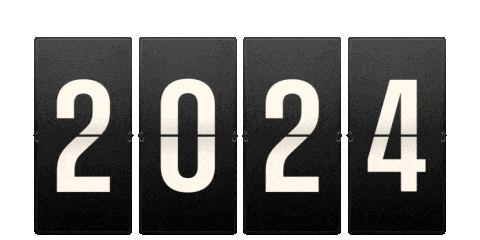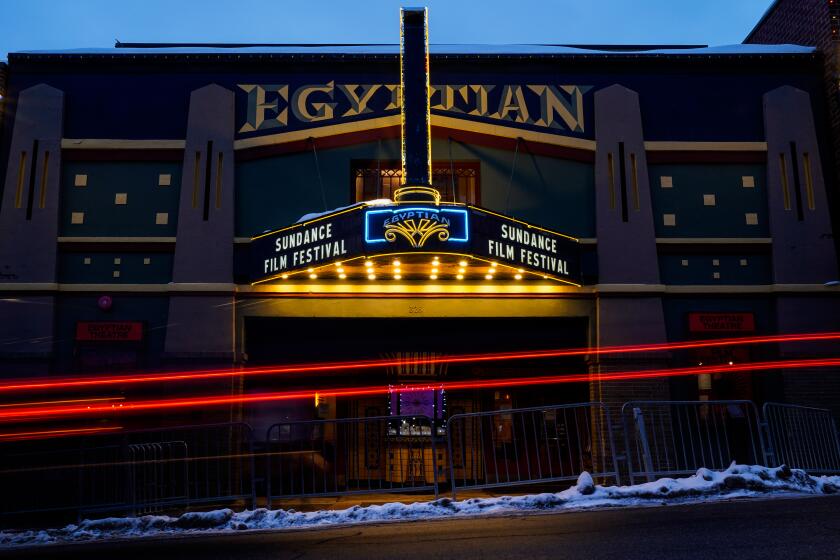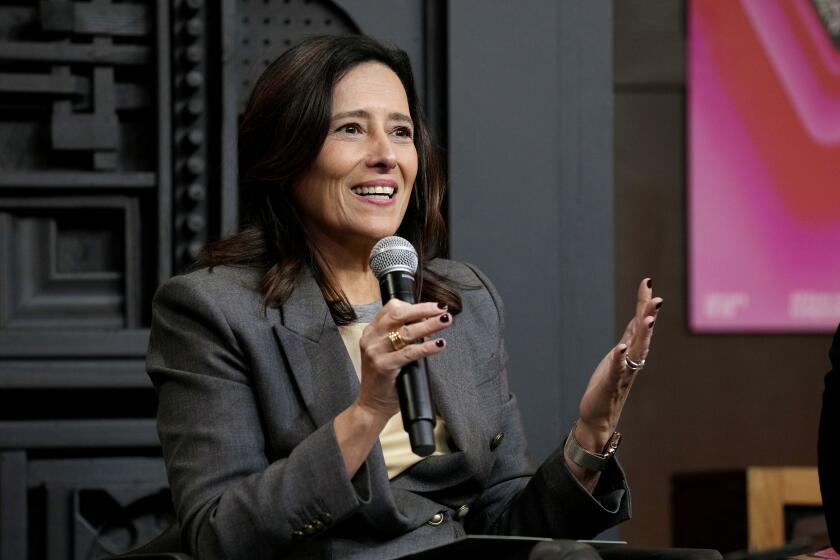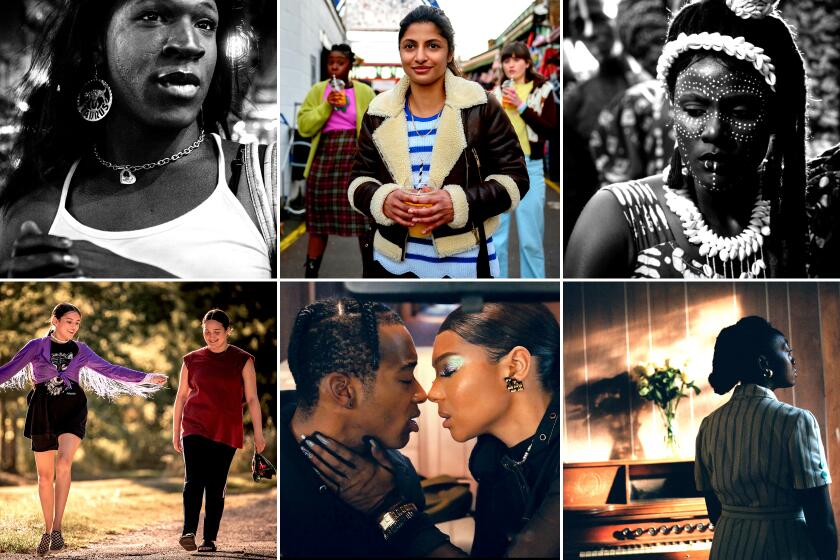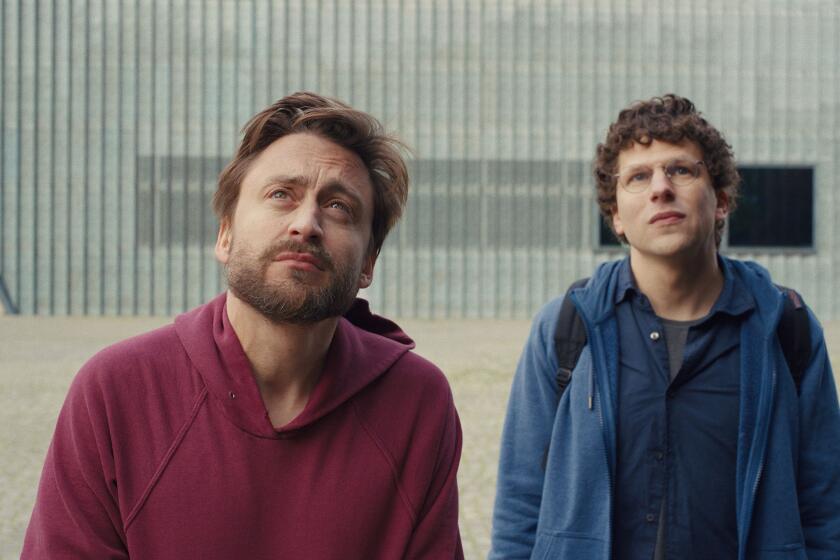Animation by Tomasz Czajka / For The Times; photographs by Kent Nishimura / Los Angeles Times, Artisan Entertainment, Sony Pictures Classics and Bluemark Productions
- Share via
For a tiny moment in Chris Smith’s wry 1999 documentary “American Movie,” Hollywood glamour seeps into the film’s wintry Wisconsin gloom. On a TV set, Billy Crystal monologues at the 1997 Oscars, a broadcast that saw the likes of “Shine,” “Fargo,” “Secrets & Lies” and “Breaking the Waves” jockeying for major awards. “Who are you people?” Crystal cracks to a decent-sized laugh from an industry crowd unaccustomed to so much scruffy indieness.
Mark Borchardt, lank-haired, divorced and on the cusp of 30, watches from his mother’s couch, exhausted but somehow rapt and not depleted. He’s the only one in the film dreaming the big dream: At first, he wanted to write, direct and star in a personal-sounding drama called “Northwestern.” Now, the budding auteur has pivoted to making the horror flick that’s really in his bones, “Coven” (which he mispronounces in a way that rhymes with “woven”). Borchardt is spectacularly untalented. It doesn’t matter. Seeing his eyes shine, you want “Coven” to happen.
The 1999 Project
All year we’ll be marking the 25th anniversary of pop culture milestones that remade the world as we knew it then and created the world we live in now. Welcome to The 1999 Project, from the Los Angeles Times.
“American Movie,” which premiered 25 years ago this week at the Sundance Film Festival, took Borchardt’s aspirations and shaped them into something more suggestive, crystallizing the moment when independent features were storming the gates of the Hollywood castle. It’s worth returning to Crystal’s monologue, in which he glibly calls that year’s Oscars “Sundance by the Sea.” The idea that such interlopers would ever dominate the film industry’s big night seemed mildly amusing to him then; now, the moment drips with irony.
Mark’s bookshelf groans under the weight of an autodidactic’s zeal: scripts by Spike Lee and Steven Soderbergh; “Notes” by Eleanor Coppola, about the calamitous shooting of her husband’s “Apocalypse Now”; several creased studies of Hitchcock and Kubrick. Soon to be published would be John Pierson’s popular 1996 “Spike, Mike, Slackers, & Dykes,” which chronicled the rise of indie outsiders, making their journeys seem replicable by anyone, you or me. (Pierson, along with power reps John Sloss and Micah Green, would eventually turn “American Movie” itself into a hot property.)
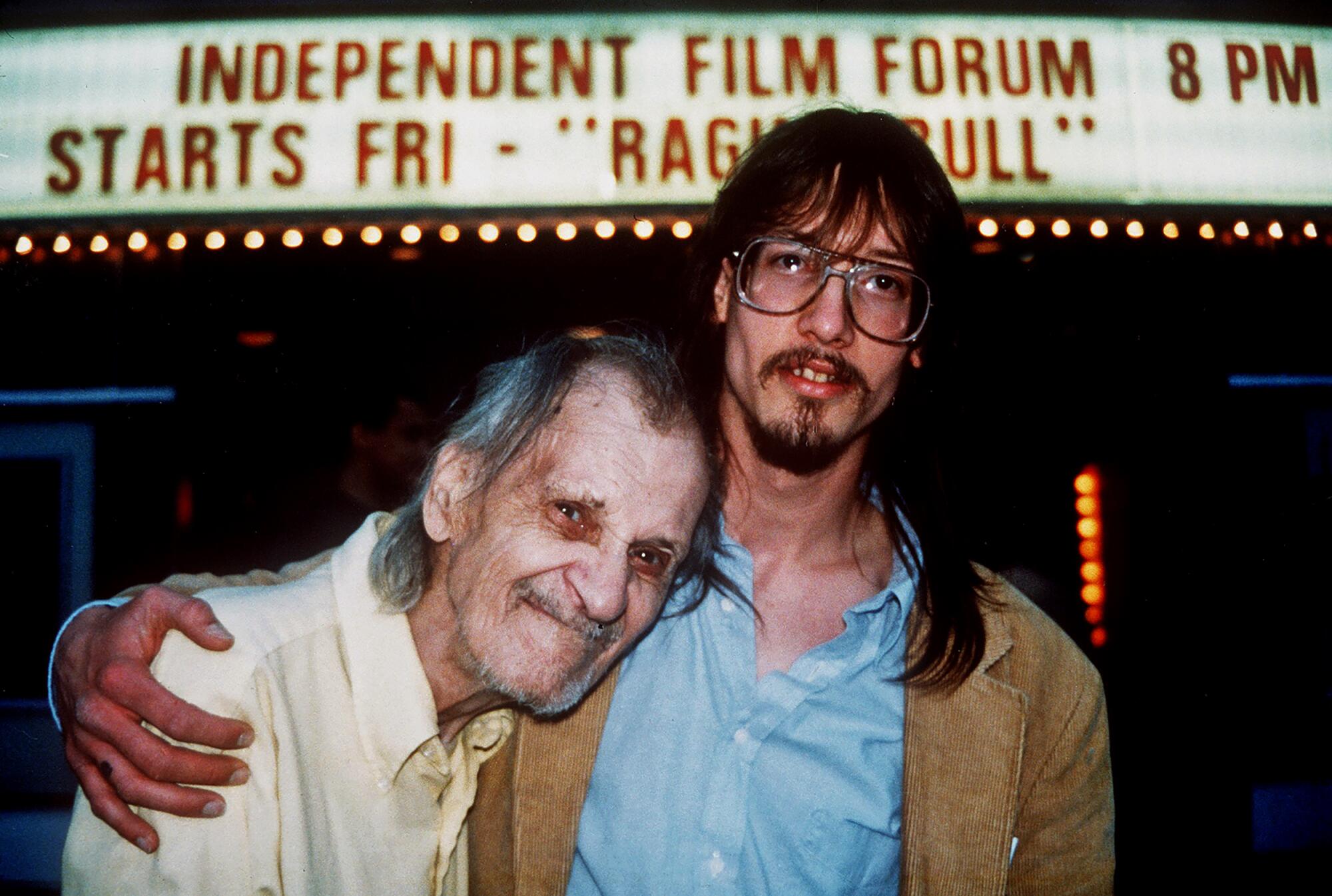
But Mark doesn’t fit the mold. As busy as he seems, enlisting family and friends into his schemes — including his best bud, the late Mike Schank, a dead-eyed acid burnout — you don’t expect the next Martin Scorsese to speak with a thick Milwaukee honk, or work a day job vacuuming a cemetery.
That was part of the documentary’s savvy. Smith and his co-producer Sarah Price, who, as a two-person crew, began tailing the “Coven” team, had a hunch that the real story wouldn’t be on the page. The relentless Sundance-ification of young hopefuls had begun and that was material enough. Thousands of dollars in debt, Mark fears being a “nothing.” His desperation turns the film into a paradox: a heartwarming tragedy touched by gentle indulgence.

Before “American Movie,” the genre of the anti-genius was already on the rise. Tim Burton’s 1994 “Ed Wood” remains a high-water mark for its director, always more comfortable in the gothy company of the misunderstood. (That film’s screenwriting team, Scott Alexander and Larry Karaszewski, had another film in those weirdo 1997 Oscars, “The People vs. Larry Flynt.”) And we can look ahead to decades of reality TV for countless examples of the magnetism of the less-than-gifted.
Call it dark fate, then, that “American Movie” found itself at a Sundance, where Borchardt’s dream of discovery did come true — but for someone else. Grossing close to $250 million worldwide, “The Blair Witch Project” was DIY horror at its most concentrated and resourceful. It turned Sundance into a genre launching pad in a way that had never been seen before. It was basically “Coven” done right.
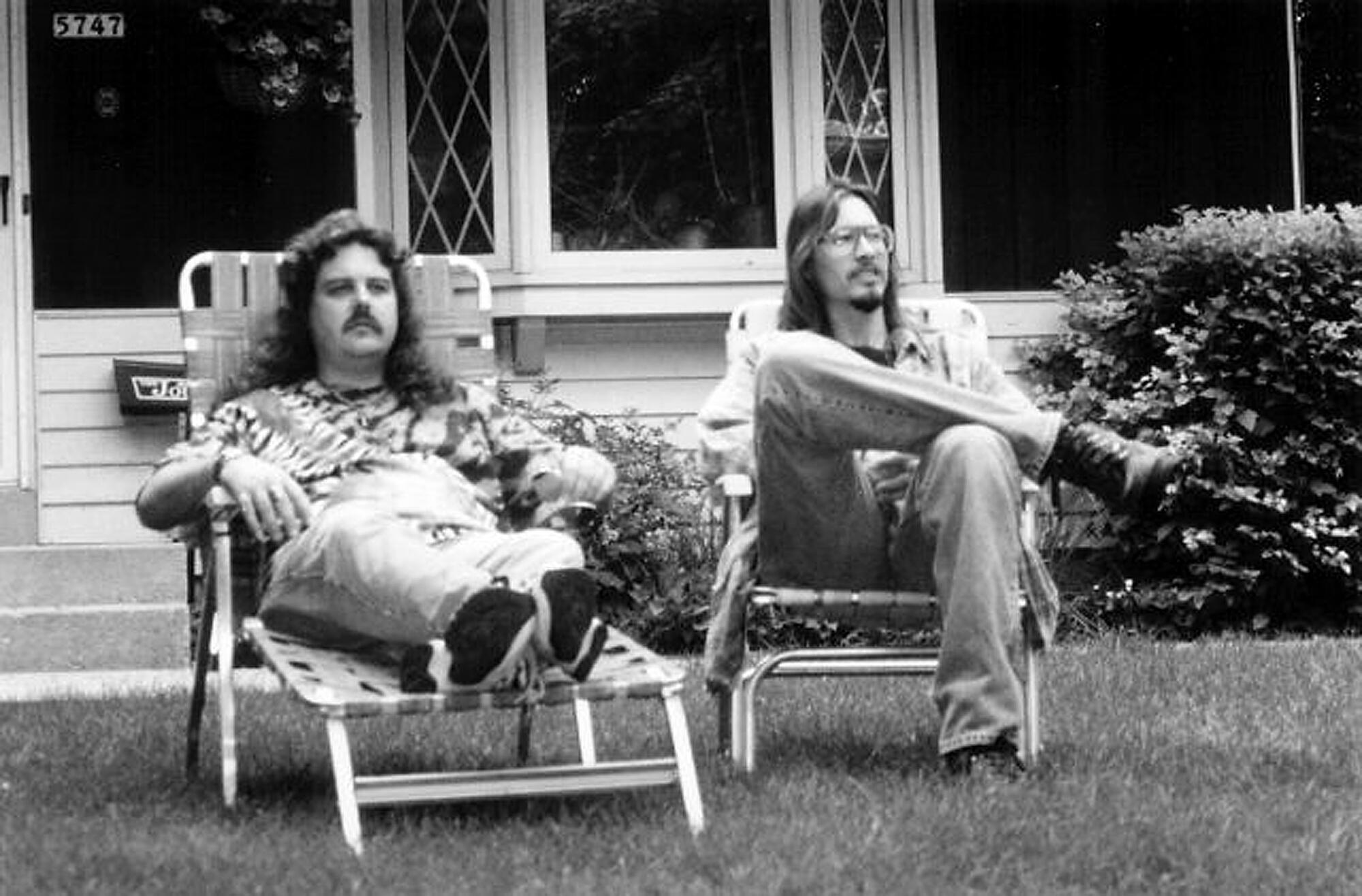
The two movies are remarkably similar in strategies and potency. “The Blair Witch Project” is, at root, a tale of sad obsession: a headlong rush into haunted woods by a dreamer who hasn’t quite thought it all through. The doomed characters turn the camera on themselves, hinting at the meta to come. (1999 would be as meta as years get.) “American Movie,” meanwhile, suggests a dark horror in the distinctly indie myth of the hot new thing. Borchardt’s status at film’s end is both vindicated and a shambles. To date, he still hasn’t completed “Northwestern.” He may be lost in a woods of his own.
There is a dream and a nightmare both in “American Movie” — what has making “Coven” ultimately cost Mark? — and that’s one of the reasons why it still feels significant. Director Smith has since found a rich vein of self-deluders in many of the projects that followed: 2019’s “Fyre,” the most harrowing retelling of that phony festival’s implosion; 2020’s early pandemic comfort watch “Tiger King”; and 2022’s “Bad Vegan” are all his. He has a new film at this year’s Sundance, “Devo,” about the iconic new wave band.
I hope Mark Borchardt is doing OK. I hope his three children, now adults, are doing OK too. Laugh at him if you must, as Crystal did, from a studio perch that was already crumbling. But both “Coven,” a disaster, and “The Blair Witch Project,” a blockbuster, expressed the same yearning for authenticity that has driven — plagued? — the industry ever since. And success, whatever that would come to mean in the new millennium, was a shifting metric.

More to Read
Only good movies
Get the Indie Focus newsletter, Mark Olsen's weekly guide to the world of cinema.
You may occasionally receive promotional content from the Los Angeles Times.

